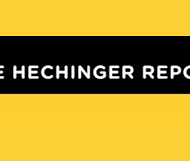OPINION: Here’s how one New England State is addressing sharp declines in higher-ed student enrollment

The Hechinger Report
The 2025 enrollment cliff forecast for years began more than a decade ago in Maine, where the number of high school graduates has been on a steady decline.
At the University of Maine, we have addressed these challenges by focusing on making college affordable for both in-state and out-of-state students, as well as by truly welcoming prospective applicants — and letting them know we care about their growth and development as individuals and their overall well-being.
However, while we have stemmed the decline in our enrollment over the last decade, the challenges we face in recruiting and retaining students are even more pronounced today.
These challenges are not unique to Maine. In the last two years, 1.4 million fewer students across the U.S. have decided to continue on with their studies than previously. While the pandemic has likely played a role in accelerating this decline, the phenomenon precedes it.
A number of surveys in recent years found that half the adults in the U.S. believe higher education is not worth the cost. Soaring college student debt and states’ decreasing investment in higher education over the last several decades have contributed to the declining number of college students.
During the pandemic, increasing rates of mental health issues have been identified as another driver in students’ stopping out.
Some of Maine’s challenges are specific to its economy and demography. Maine has the third-lowest birth rate in the country, while New England, where Maine universities primarily recruit for out-of-state students, has the lowest regional birth rate in the country. Maine’s low birth rate, coupled with it being the state with the highest median age, assures continued challenges in enrollment into the future.
Maine is one of the top ten states in the percentage of its students graduating from high school, but, paradoxically, it is often in the bottom ten in the percentage of high school graduates that go on to postsecondary education.
Continue Reading
Share








